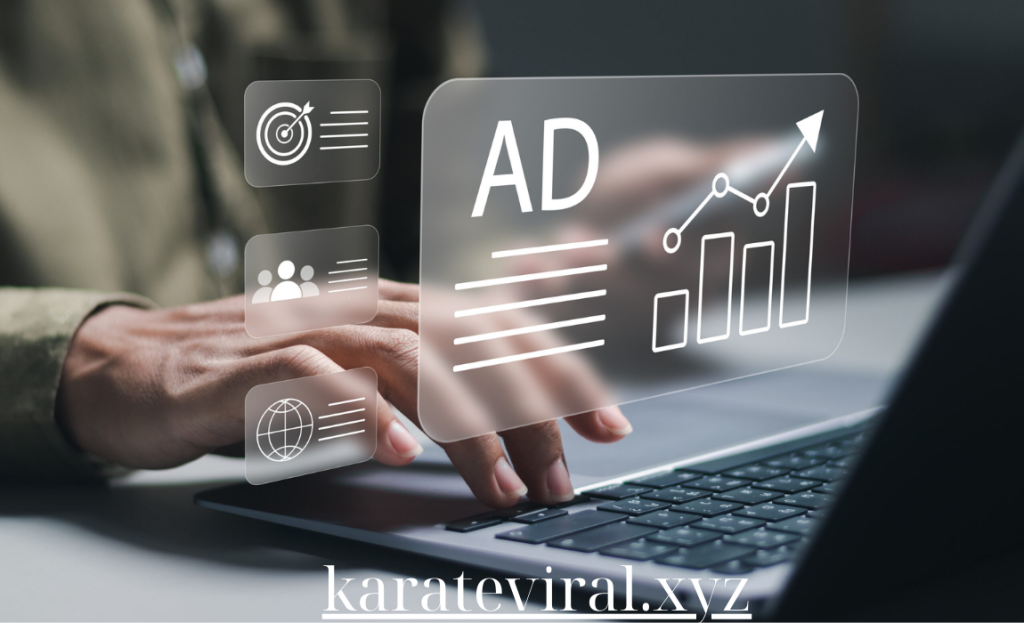Paid Social Media Advertising
Top Social Media Advertising Strategies for Maximum ROI
Social media advertising has become a crucial component of modern marketing strategies, allowing businesses to reach highly targeted audiences and achieve measurable results. However, to ensure maximum ROI (Return on Investment), businesses need to implement effective strategies tailored to each platform’s unique strengths. Here are some top social media advertising strategies that can help you maximize your ROI and drive better results for your campaigns.
1. Define Clear Objectives and KPIs
Before launching any social media advertising campaign, it’s essential to define clear objectives and key performance indicators (KPIs). Whether your goal is to drive website traffic, increase brand awareness, generate leads, or boost sales, understanding what success looks like will help you optimize your campaign and measure performance.
How to Do It:
- Set specific, measurable goals such as increasing website visits by 20%, generating 100 leads, or achieving a 5% conversion rate.
- Choose KPIs that align with your objectives, such as click-through rate (CTR), conversion rate, cost-per-click (CPC), or return on ad spend (ROAS).
- Use platforms’ built-in analytics tools (Facebook Ads Manager, LinkedIn Campaign Manager, etc.) to track performance and adjust strategies in real-time.
Why It’s Effective:
- Clear objectives keep your campaigns focused, ensuring that you’re not wasting ad spend on goals that don’t align with your business needs.
- Measurable KPIs allow you to assess performance accurately, making it easier to optimize your campaigns for better ROI.
2. Leverage Audience Targeting for Precision
One of the most significant advantages of social media advertising is the ability to use precise audience targeting. Most platforms offer advanced targeting options, enabling you to reach the right users based on demographics, interests, behaviors, and even previous interactions with your business.
How to Do It:
- Use Facebook or Instagram’s Custom Audiences to target people who have previously interacted with your brand (e.g., visited your website, engaged with your posts, or signed up for your newsletter).
- Leverage Lookalike Audiences to expand your reach by targeting users who share characteristics with your existing customers.
- On LinkedIn, use job titles, industries, and company sizes to zero in on your B2B target audience for higher-quality leads.
Why It’s Effective:
- Targeting the right audience increases the likelihood of engagement and conversions, leading to better ROI.
- Tailored messaging based on audience segmentation helps create personalized experiences, improving the overall effectiveness of your ads.
3. Create Engaging and Visual Content
Social media is a highly visual medium, and users are more likely to engage with ads that capture their attention quickly. Creating engaging and visually appealing content is essential for standing out in users’ crowded feeds and driving action.
How to Do It:
- Use high-quality images and videos to make your ads more eye-catching and engaging. Platforms like Instagram, TikTok, and Facebook prioritize visual content.
- Incorporate user-generated content (UGC), such as customer photos or reviews, to build trust and authenticity.
- Experiment with different content formats, including carousel ads, stories, and short-form videos (like Instagram Reels or TikTok), to increase engagement.
Why It’s Effective:
- Engaging visuals capture attention and encourage users to interact with your ad, driving higher click-through rates and conversions.
- Videos, especially short-form content, have been shown to generate higher engagement rates, helping boost your ROI.
4. Utilize A/B Testing for Optimization
A/B testing, or split testing, is an essential strategy for optimizing social media ads. By testing different variations of your ads (headlines, images, copy, CTAs), you can identify which elements resonate best with your audience and improve your campaign performance.
How to Do It:
- Test one element at a time, such as the headline, image, call-to-action (CTA), or ad copy, to determine which version performs better.
- Run multiple variations of the same ad to different audience segments to see how different groups respond.
- Use the results to refine your ads and continuously optimize future campaigns based on data.
Why It’s Effective:
- A/B testing allows you to discover what works best for your audience, helping you maximize your ROI by running only the most effective ads.
- By regularly testing and optimizing, you can reduce wasted ad spend and improve conversion rates.
5. Leverage Retargeting Campaigns
Retargeting is one of the most effective ways to re-engage users who have previously interacted with your brand but didn’t convert. By showing ads to people who have visited your website, abandoned their shopping cart, or engaged with your content, you can encourage them to complete the desired action.
How to Do It:
- Use Facebook Pixel or Google Ads Remarketing Tag to track visitors to your website and serve them personalized ads across Facebook, Instagram, and other social platforms.
- Create dynamic retargeting ads that display the exact products or services users viewed, increasing the chances of conversion.
- Target users based on their stage in the buyer’s journey (e.g., show different ads to people who visited your pricing page versus those who browsed blog posts).
Why It’s Effective:
- Retargeting increases the likelihood of conversion by targeting users who are already familiar with your brand.
- Personalized ads based on past behavior can significantly boost engagement and drive higher ROI by focusing on interested prospects.
6. Utilize Influencer Marketing
Collaborating with influencers can amplify your social media advertising efforts, giving your brand access to new, engaged audiences. Influencer marketing leverages the credibility and reach of influencers to promote your products or services through authentic content.
How to Do It:
- Identify influencers who align with your brand’s values and target audience. Look for influencers with high engagement rates rather than just focusing on follower count.
- Collaborate on sponsored posts, giveaways, or product reviews, ensuring the content feels natural and aligns with the influencer’s style.
- Use micro-influencers (with 10k–100k followers) for more niche, targeted campaigns that can often yield better engagement and higher ROI than larger influencers.
Why It’s Effective:
- Influencers can help you reach a wider audience and generate social proof, leading to higher engagement and conversions.
- Authentic influencer endorsements build trust, driving more meaningful interactions with your brand and improving ROI.
7. Utilize Platform-Specific Ad Formats
Different social media platforms offer unique ad formats designed to drive specific actions. To maximize your ROI, it’s important to leverage the ad formats that best fit your campaign objectives and platform strengths.
Key Ad Formats:
- Facebook/Instagram Stories Ads: Vertical ads that appear between users’ stories. Great for full-screen immersive experiences, driving both engagement and direct conversions.
- LinkedIn Sponsored Content: Ideal for B2B companies looking to promote articles, whitepapers, or job postings to a professional audience.
- TikTok In-Feed Ads: Short, engaging videos that appear in users’ For You feeds, perfect for driving awareness and interaction among younger audiences.
- Twitter Promoted Tweets: Use these to reach users with brief, timely content. These ads are great for events, product launches, or quick updates.
Why It’s Effective:
- Platform-specific ad formats are optimized for user behavior on each platform, increasing the chances of engagement and conversion.
- By choosing the right ad format for your goal, you ensure your message resonates with users in a way that feels natural to the platform.
8. Focus on Mobile Optimization
With a large portion of social media traffic coming from mobile devices, ensuring your ads are mobile-optimized is critical for maximizing ROI. This means creating content that is visually appealing, loads quickly, and offers a seamless user experience on smartphones and tablets.
How to Do It:
- Design mobile-friendly visuals that fit vertical and square formats, especially for Instagram, TikTok, and Facebook Stories.
- Keep text short and to the point, ensuring that it’s legible on smaller screens.
- Optimize your landing pages for mobile to ensure users can easily navigate and convert without encountering barriers like slow load times or hard-to-read forms.
Why It’s Effective:
- Mobile-optimized ads improve the user experience, reducing bounce rates and increasing the likelihood of engagement and conversions.
- Given that most social media users access platforms via mobile, this ensures your ads reach their full potential on mobile devices.
9. Track and Analyze Your Campaigns
Finally, to maximize your ROI, it’s crucial to track and analyze your campaigns regularly. Social media platforms offer detailed analytics tools that allow you to monitor performance and identify areas for improvement.
How to Do It:
- Use Facebook Ads Manager, Instagram Insights, LinkedIn Analytics, and similar tools to track performance metrics like impressions, engagement, CTR, and conversions.
- Analyze the data to identify trends, such as which ads are driving the most conversions, which audiences are engaging the most, and which platforms are delivering the best ROI.
- Continuously optimize your campaigns based on the data. For example, adjust targeting, test new ad formats, or allocate more budget to top-performing ads.
Why It’s Effective:
- Regular monitoring and analysis ensure that your campaigns stay on track, and you can quickly adapt to any changes in performance.
- Data-driven decisions help reduce wasted ad spend and focus resources on what’s working best, maximizing ROI.
Conclusion
Maximizing ROI from your social media advertising efforts requires a combination of precise targeting, engaging content, optimization through testing, and continuous monitoring. By leveraging advanced strategies such as audience retargeting, influencer marketing, and A/B testing, you can ensure that your social media campaigns deliver the best possible results.

